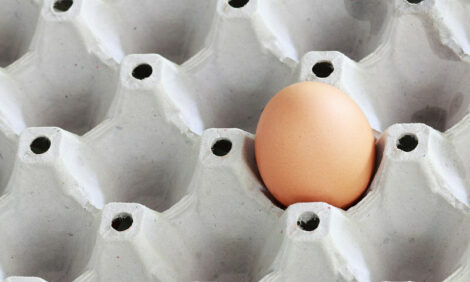



DNA May Yield Germ Sources
US - Fears that large-scale livestock operations could contaminate wells and streams have prompted local health officials to look to a still-developing science that uses DNA testing to differentiate human waste from animal waste.
Microbial source tracking, as the new technology is known, could help determine whether fecal pollution in a ditch or stream originated from a cow, a human being, pets, or wildlife like deer and Canada geese.
Brad Espen, director of environmental health for the Wood County Health Department, said the pilot study originated with the concerns over the large dairy farms but also sprung from the fact that many residential septic systems are known to be faulty and leaking.
"It was formed to address water-quality issues, and CAFOs [concentrated animal feeding operations] are part of that, but right now one of our biggest issues is home septic systems," Mr. Espen said.
Robert Midden, an associate professor of chemistry at Bowling Green State University, is working with the health department and the U.S. Geological Survey on the study.
He has attended public hearings that are held before new dairy farms are issued operating permits by the Ohio Department of Agriculture, and he's heard neighboring homeowners make claims that allowing the dairies to build giant manure lagoons and apply that manure to area farm fields will contaminate their wells and water sources.
"There is a tremendous amount of community concern regarding the operation of these new farms, yet the Ohio Department of Agriculture believes that if they're operated properly and according to regulations they won't cause any adverse effects," Mr. Midden said. "We're trying to apply the highest-quality science to address these concerns and determine whether there really is an impact or not."
The Northwest Ohio Water Quality Work Group, which was formed this summer by the Wood County Health Department and BGSU, is not taking a side in the debate.
"We said repeatedly we're not out to prove anyone's right or wrong. We're trying to take as close to an unbiased position as possible," Mr. Midden said. "We're not trying to prove CAFOs are bad or good. We're not trying to prove anyone's concerns are legitimate or not. We just want to be able to know the way it really is, the best as science can tell us."
With a $15,000 grant from the Ohio Lake Erie Commission and another $15,000 from the Geological Survey, testing is now under way at the Geological Survey's lab in Columbus to identify DNA markers in waste sources.
Christopher Kephart, a hydrologist with the Geological Survey who is leading the project, said he hopes to determine if these identifying genetic markers will enable scientists to track waste sources.
* "It was formed to address water-quality issues, and CAFOs [concentrated animal feeding operations] are part of that, but right now one of our biggest issues is home septic systems." |
|
Brad Espen, director of environmental health for the Wood County Health Department.
|
"Within an organism like E. coli, its genetic makeup may have DNA that's unique to that host animal -- whether it's human, cattle, pigs, chickens, whatever, so a genetic marker is a specific segment of DNA that has been found to be unique to a source animal," he explained.
For the first round of testing, samples were collected from six local septic tanks, the Bowling Green and Perrysburg municipal wastewater plants, a manure lagoon at Manders Dairy near Weston, and the BGSU golf course where Canada geese droppings were collected.
Mr. Espen said he was encouraged that Manders Dairy, which opened in 2002 with 600 cows and plans to expand to 2,100 cows, was willing to take part in the study.
"It really shows a lot that they want to work with us," he said.
Mr. Kephart said that if the Geological Survey is able to identify genetic markers in the waste samples, it will then collect samples from streams and ditches that are known to be draining waste sources.
"This is a pilot study to identify the utility of these markers," he said. "So we will collect samples we suspect will have an impact from a certain source, whether it be nearby septic systems or nearby wastewater effluent systems or nearby cattle farms. We don't really have any suspicions at this point. ... We want to get a before and after snapshot, because several of these CAFOs are in the works."
That really is where the whole study originated.
Before the Manders Dairy was built, the Wood County Health Department tested all water wells within a mile of the dairy and took samples from ditches and streams near the dairy and near fields where manure was to be applied as fertilizer.
With extra funding from county commissioners, it has continued to do that kind of testing in locations where new dairies are sited. Currently, the Reyskens Dairy is operating about six miles west of Cygnet, while at least two others are planned in southern Wood County.
Students in Mr. Midden's class assist the health department with the sampling, which gives them a way to apply what's in a textbook to real life.
"What we find is that students learn a whole lot more when they realize what they're doing has a real benefit for others," Mr. Midden said.
Mr. Espen said if health officials can pinpoint sources of contamination, they will have a better chance of getting the problems corrected.
If contamination is from a home septic system, the homeowner could be ordered to upgrade or correct the septic system.
If it's coming from fields where cow manure is applied, the health department would work with the farmer to correct the problem.
The testing also could be used to bolster the health department's case if it were forced to litigate, he said.
"It will be a good tool to identify responsible parties," Mr. Espen said. "If we can't correct the problem, it could end up with legal action."
Mr. Espen said that if the results of the initial study with the Geological Survey prove promising, officials are hoping to land funding to do a larger-scale study that would take in much of the Portage River watershed.
"Ultimately we want to be able to use science to track and identify sources of contamination in our surface waters, and this is the first step," he said.









